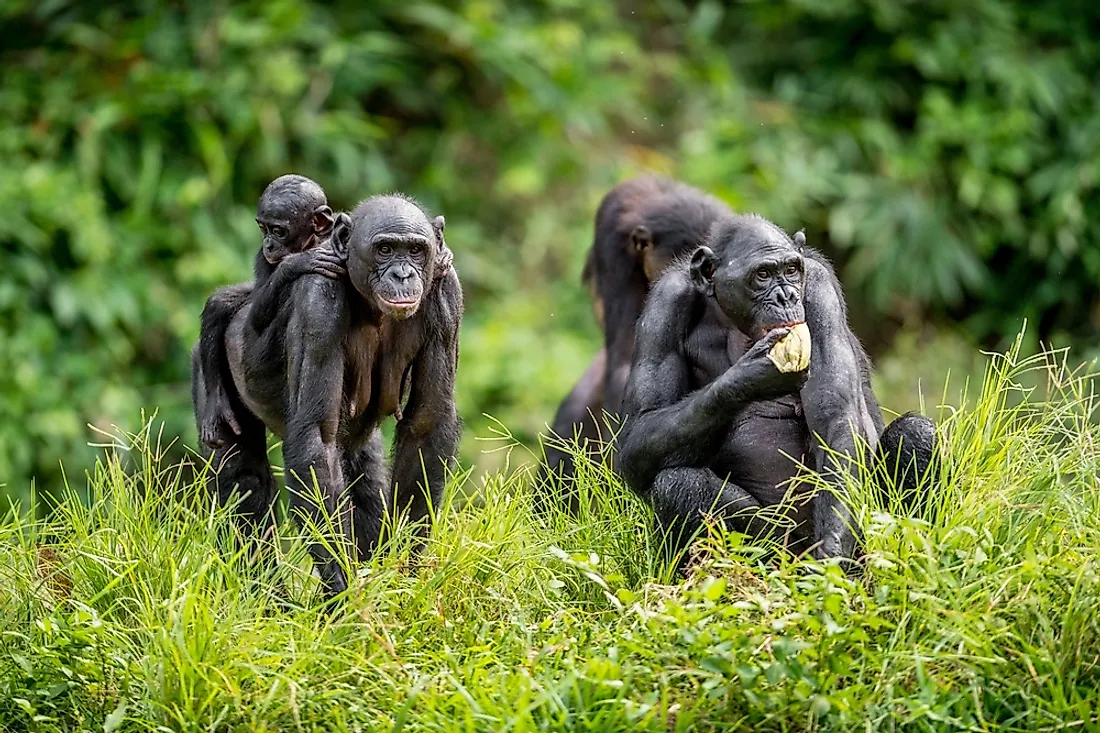Bonobo Facts - Animals of Africa

Bonobos are the closest relatives to human beings with bonobos having a 97% similarity to the DNA of human beings. Aside from this, there are plenty of similarities in the behavior of the two. Bonobos are classified as endangered with approximately 10000 left in the wild.
Physical Description
Bonobos are primates that have a striking resemblance to chimpanzees but of different species. Sometimes, it is called the dwarf or the pygmy chimpanzee. Males are larger than females. The average adult male weighs between 75 to 132 pounds compared to the average 66 pounds of adult females. The animal’s total length, from the nose to the rump, may reach between 28 and 33 inches.
Habitat and Range
Bonobos are found only in the Democratic Republic of Congo. Specifically, they live in the south of river Congo and to the north of river Kasai, which is a tributary of river Congo. The bonobos reside in the forests found in the central African country of DRC. Their range does not go beyond the Sankuru-Kasai to the south and to the west and neither does it go beyond the Lualaba to the east. The forests in the DRC are humid which makes the perfect habit for bonobos. The animals also prefer heights below 5000 feet.
Behavior
Bonobos are social animals with a hierarchy. Unlike most animals, the females are at the top of the social groups. The status of the male depends on the status of the female. The social groups vary in size and will usually split during the day but come back to sleep in the same nest at night.
Sexual activity plays an important role for bonobos. The activity may be used as a greeting, to form bonds, resolving conflict, and reconciliation.
In terms of violence, bonobos are relatively peaceful. Different groups can mingle peacefully unlike other chimpanzee-related animals. Further, the adults are very tolerant of the playfulness of infants.
Diet
Bonobos are omnivorous animals. Fruit makes up a huge percentage of their diet with occasional honey, eggs, leaves, and meat from small vertebrates. Some cases show bonobos eating lower-order primates with some people claiming that the creatures are cannibalistic while in captivity. Thus far, only one case of cannibalism is documented back in 2008.
Reproduction
Females typically mature enough for mating at the age of around 13 years. After the females get pregnant, they gestate for an average period of 240 days. The infants are cared for by the mothers for four years, but the bond between the two is extremely strong and may last for a lifetime. Male babies depend on their parents for longer than the female ones who become independent quickly. After the four years, the females get pregnant again. Among bonobos, there is no definitive mating season observed because they engage in sexual activity almost always. In the course of their lifespan, the females each have between five and seven babies.











